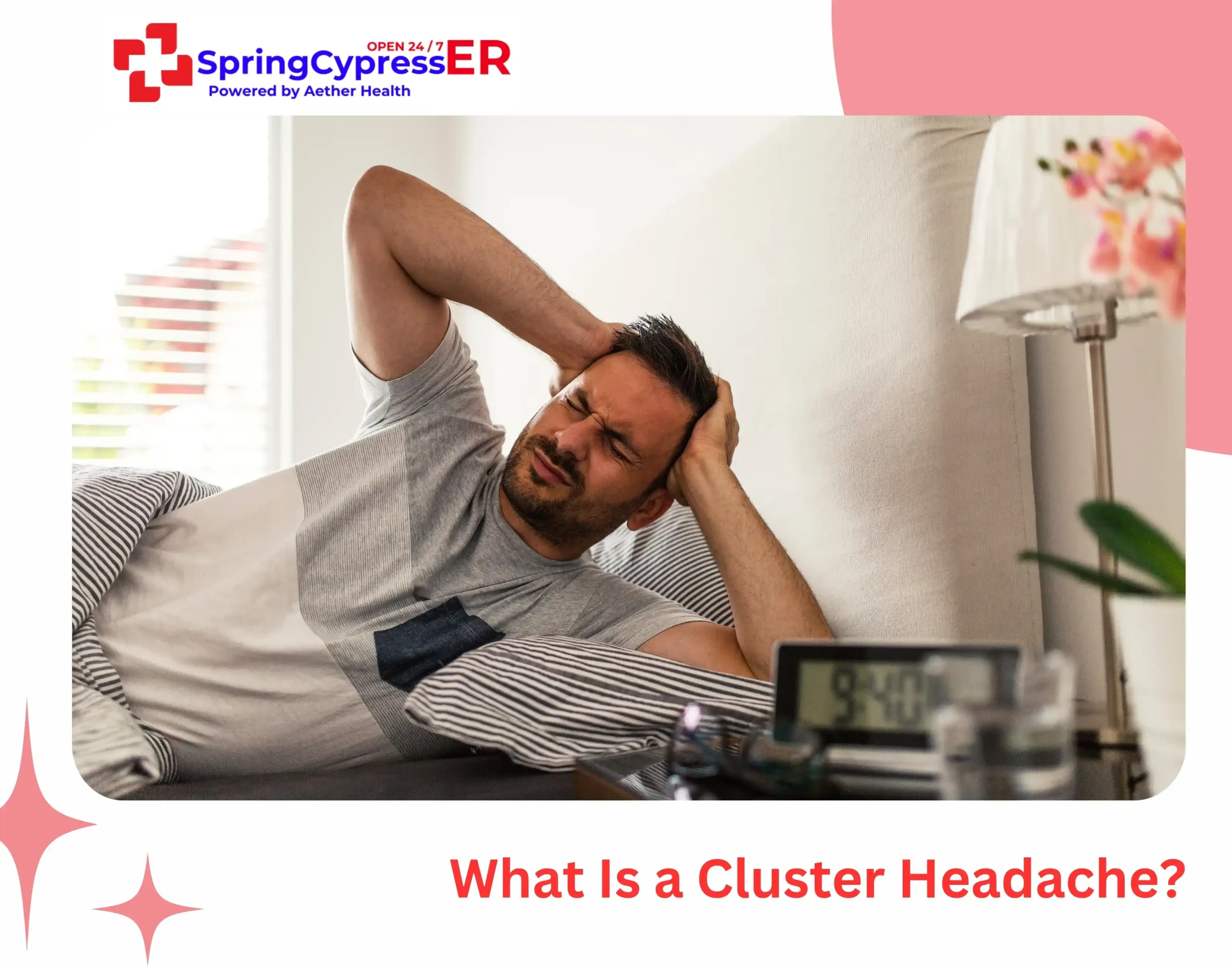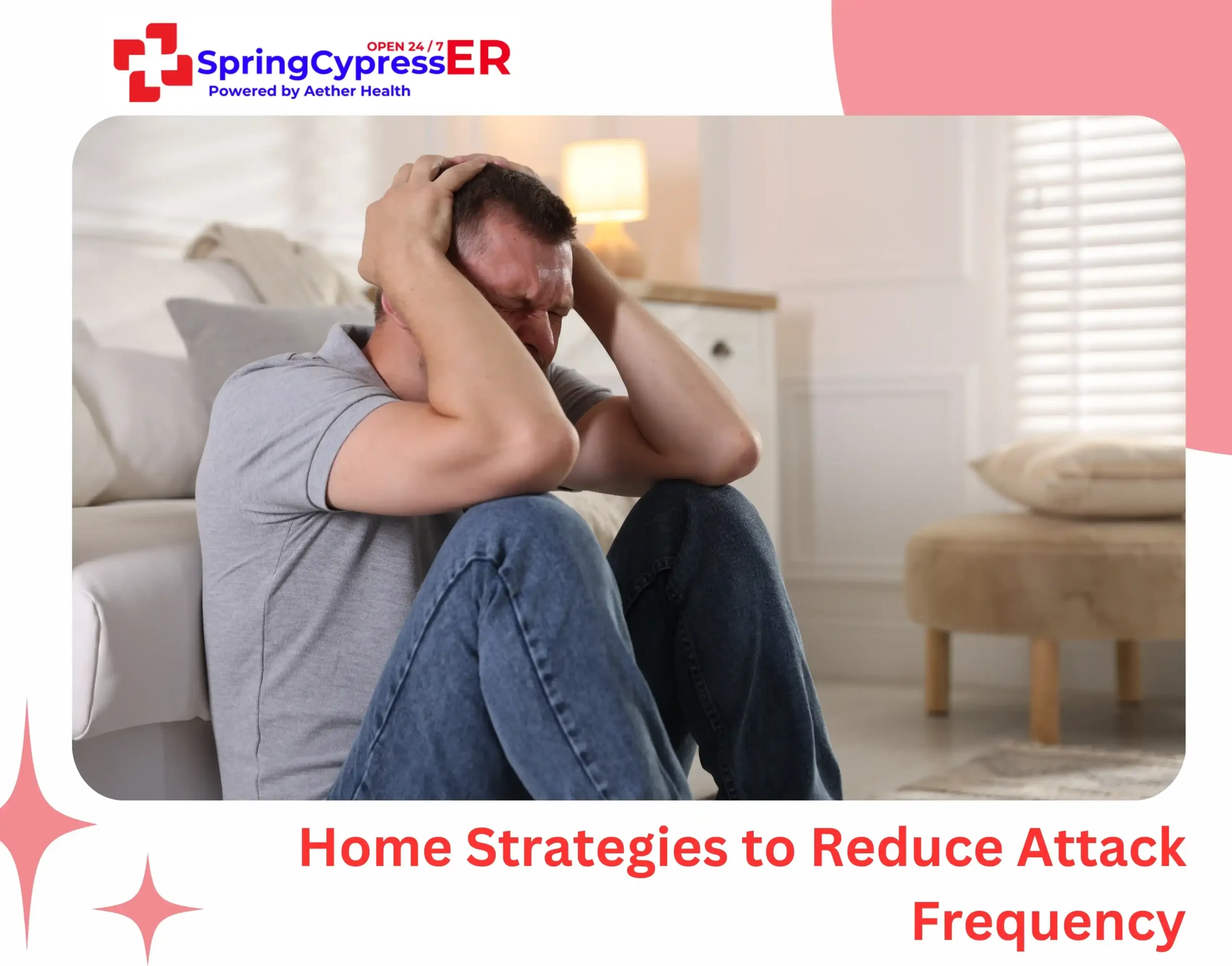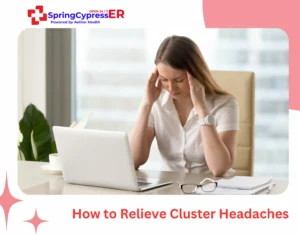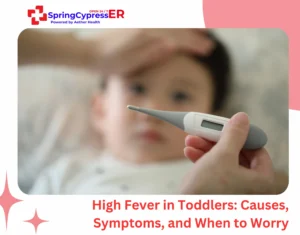Pain behind your eye that feels like a knife twisting, and it happens again tomorrow, and the next day, sometimes multiple times a day. That’s what cluster headaches do. Most people don’t realize that, with the right approach, the pain can stop within minutes and attacks can become less frequent.
It’s not just about comfort, either. Cluster headaches can mimic serious brain issues like bleeding, aneurysms, or infections. Knowing how to respond and when to get imaging or lab tests can be life-saving.
So let’s talk about what cluster headaches are, how they’re different from other headaches, what you can do to ease the pain, and when to seek emergency care.
What Is a Cluster Headache?

Cluster headaches bring intense cycles of pain (“clusters”). These attacks often come on suddenly, last anywhere from 15 minutes to 3 hours, and can occur several times a day for weeks or months before disappearing for a while.
Less common than migraines, their pain is often stronger and can strike many times a day without warning.
What Does Cluster Headache Feel Like?
Cluster headache pain is sudden and severe, typically occurring on one side of the head, around the eye or temple.
Common symptoms include:
- Sharp, burning, or stabbing pain
- Pain around or behind one eye
- Red, watery eye on the painful side
- Runny or blocked nose on one side
- Droopy eyelid or swelling around the eye
- Restlessness or trouble sitting still
How Cluster Headache Differs from Migraines
Cluster headaches and migraines are both severe, but show clear differences.
Key differences:
- Cluster attacks are shorter, often 15 minutes to 3 hours
- Pain is more intense and hits quickly
- Happens in cycles, sometimes several times a day
- Less nausea compared to migraines
- Restlessness instead of wanting to lie down in a dark room
- More eye and facial symptoms on one side
Fast Ways to Relieve a Cluster Headache
Cluster headaches strike quickly and intensely, so you need fast relief. These strategies help you regain some control during an attack.
1. High-flow Oxygen Therapy
Breathing pure oxygen through a mask can help alleviate pain quickly. Doctors recommend inhaling at a high rate for 10-15 minutes, which often stops or shortens an attack.
Why it helps:
- Helps calm blood vessels and nerves linked to pain
- Often gives relief faster than pills
2. Cold Compress on Head/Neck
Apply a cold pack to the painful area for brief periods to numb pain and calm your eye and temple.
Tips:
- Wrap the ice pack in a cloth
- Apply for short periods during an attack
3. Dark, Quiet Room and Controlled Breathing
Sit in a dark, quiet room and focus on slow breathing to stay calm and reduce discomfort.
Try slow breathing like:
- Breathe in for 4 seconds
- Hold for 2 seconds
- Breathe out for 6 seconds
4. Avoid triggers
Some things can trigger or worsen a cluster attack. Avoiding them during a cluster cycle can help reduce the strength and frequency of attacks.
Common triggers include:
- Alcohol
- Cigarette smoke
- Strong smells like perfume or chemicals
Home Strategies to Reduce Attack Frequency

Cluster headaches come in cycles, so actions between attacks may reduce their frequency and intensity.
1. Keep a Regular Sleep Schedule
Changes in sleep can trigger cluster headaches. Go to bed and wake up at the same time every day, even on weekends. Avoid napping if it disrupts your routine.
Quick tips:
- Keep your bedroom dark and quiet
- Stick to the same sleep hours
- Avoid screens before bed
2. Avoid Alcohol During Cluster Periods
Alcohol is a strong trigger during active cluster cycles. Even a small amount can trigger an attack.
Best approach:
- Skip alcohol completely during cluster phases.
- Choose water or herbal tea instead
3. Reduce Stress Triggers
Stress does not always cause cluster headaches, but it can make your body more susceptible to them during cluster periods. Calming routines help your nervous system stay balanced.
Simple ways to relax:
- Deep breathing
- Short walks
- Stretching
- Gentle meditation
4. Track Your Headache Pattern
Tracking symptoms helps you spot patterns and triggers, and gives your doctor clearer details.
Track:
- Time of each attack
- Foods or drinks before pain
- Sleep routine
- Activities or stress levels
- Weather changes if you notice a link
When to Visit the ER

Cluster headaches are painful, but sudden changes or extreme symptoms can indicate a medical emergency. Seek care immediately for severe warning signs.
- Pain suddenly becomes the worst headache of your life: If the pain feels different, stronger than usual, or hits you like a sudden shock, go to the ER. This can be a sign of a serious condition that needs fast treatment.
- Trouble speaking, walking, and vision changes: If your speech becomes unclear, you feel unsteady, or your vision changes suddenly, seek emergency help. These symptoms may indicate a more serious condition.
- Weakness or numbness on one side: If one side of your face, arm, or leg feels weak or numb, call for help right away. This can be a sign of a stroke.
- High fever, stiff neck, confusion: If you experience a severe headache accompanied by fever, neck stiffness, or confusion, seek emergency medical attention immediately. These symptoms can happen with meningitis, a serious infection.
- Pain does not improve, and you cannot function: If your pain stays intense, lasts longer than usual, or stops you from moving, talking, or thinking clearly, you need emergency care.
Final Thoughts
Learning how to relieve cluster headaches effectively combines fast-relief methods during attacks with preventive strategies between episodes. Keep a steady sleep routine, avoid known triggers, and track patterns to stay one step ahead. If your pain becomes unbearable or comes with warning signs, seek medical care immediately.
The Spring Cypress ER team provides fast relief with immediate access to oxygen therapy and advanced pain management. With onsite imaging and lab testing, we quickly rule out other serious causes of head pain. You can count on us for both urgent relief and guidance on long-term management of cluster headaches.
FAQs
1. What helps relieve a cluster headache fast?
High-flow oxygen and triptan medicines work fastest. A cold pack on the head, sitting in a dark room, and slow breathing can also help during an attack.
2. How long does a cluster headache last?
A cluster headache typically lasts between 15 minutes and 3 hours. It can happen several times a day during a cluster period.
3. What triggers cluster headaches?
Common triggers include alcohol, smoking, strong smells, and sudden changes in sleep. Stress and bright light may also play a role.
4. Are cluster headaches serious?
Cluster headaches are excruciating but not usually life-threatening. However, sudden “worst headache ever,” numbness, or trouble speaking or seeing needs emergency care.
5. Can cluster headaches be prevented?
Yes. Keeping a steady sleep routine, avoiding alcohol during cluster periods, staying smoke-free, and tracking triggers help reduce attacks. Doctors may also prescribe preventive medicines.




